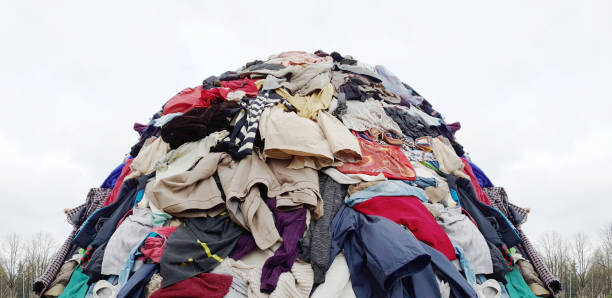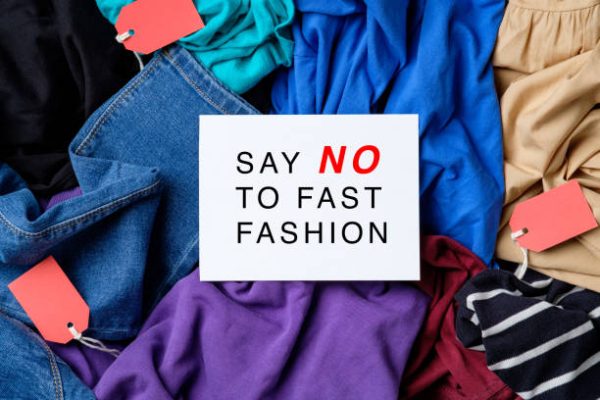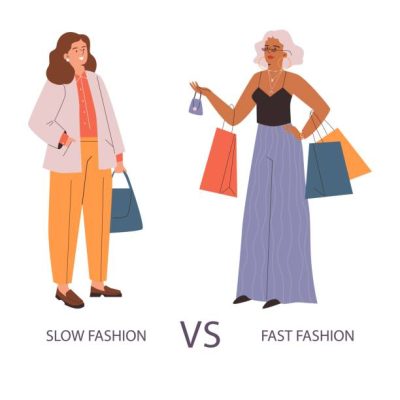In today’s world, fashion plays a big role in how we express ourselves. However, not all fashion is created equal. The two main approaches in the apparel industry are Fast Fashion vs. Slow Fashion. These two terms may sound simple, but they have a huge impact on the environment, society, and how we think about clothes. In this blog, we will explore the differences between fast fashion and slow fashion and why it matters.
What is Fast Fashion?
Fast fashion is all about producing clothes quickly and cheaply. Brands that follow this approach release new collections almost every week, so shoppers can keep up with the latest trends without spending a lot of money. The clothes are often mass-produced in factories where speed is more important than quality. Because fast fashion focuses on making a profit, the garments are usually lower in quality and don’t last long.

While fast fashion is affordable and convenient, it comes with a big downside. The mass production of clothes leads to overconsumption, waste, and pollution. The use of cheap materials like polyester, which takes hundreds of years to break down, harms the environment.
What is Slow Fashion?
Slow fashion is the opposite of fast fashion. It focuses on quality, sustainability, and ethics. Brands that support slow fashion take the time to create high-quality garments using eco-friendly materials. Instead of chasing after trends, slow fashion brands design timeless pieces that can be worn for years. Slow fashion also promotes fair labor practices, ensuring that workers are paid well and treated fairly.

While slow fashion products are often more expensive, they last much longer, which can actually save you money in the long run. Slow fashion encourages people to think carefully about their purchases and buy fewer, but better items.
Environmental Impact: Fast Fashion vs. Slow Fashion
When it comes to the environment, fast fashion vs. slow fashion could not be more different. Fast fashion contributes to a large amount of textile waste. Since the clothes are often poorly made, they get thrown away after a short period of time, adding to landfills. Additionally, the production process of fast fashion involves harmful chemicals and dyes that pollute water sources.

Slow fashion, on the other hand, is much kinder to the planet. Brands focus on using sustainable materials like organic cotton, Tencel, and recycled fabrics. The production process uses less water and fewer harmful chemicals, reducing the overall environmental footprint.
Social Impact: Fast Fashion vs. Slow Fashion
The social impact is another major difference between fast fashion vs. slow fashion. Fast fashion brands often rely on cheap labor from developing countries, where workers are paid very little and work in unsafe conditions. This is a serious issue in the fashion industry that many people are unaware of.

Slow fashion advocates for fair wages and safe working conditions. Brands that follow the slow fashion model are transparent about how and where their clothes are made. By choosing slow fashion, consumers are supporting ethical practices and helping to improve the lives of workers around the world.
Quality and Longevity
Fast fashion garments are known for their low quality. Because the focus is on producing as many items as possible, the materials and craftsmanship are often poor. As a result, clothes from fast fashion brands usually wear out quickly, leading to more frequent purchases.

Slow fashion, on the other hand, values quality over quantity. Slow fashion brands use durable materials and invest in good craftsmanship, which means their clothes last much longer. Instead of buying new clothes every season, slow fashion encourages people to invest in pieces that can be worn for many years.
Conclusion
In the battle between Fast Fashion vs. Slow Fashion, it is clear that slow fashion is the more sustainable and ethical choice. While fast fashion is cheaper and more accessible, its negative impact on the environment and society is hard to ignore. Slow fashion may cost more upfront, but it offers higher quality, longer-lasting clothing, and promotes better practices for both people and the planet. As consumers become more aware of these issues, slow fashion is gaining popularity, showing that thoughtful choices in fashion can make a big difference.
About IGREEN TEX
IGREEN TEX is a provider of fashion and textile products, offering a wide range of apparel both domestically and internationally. Our commitment to quality ensures that our products not only meet the highest standards but also promote eco-friendly practices.
To view product information click here.
Visit our website to learn more about our products and services: IGREEN TEX.
IGREEN TEX VIETNAM CO LTD
Address: No. 83, A4 Street, Ward 12, Tan Binh Dist, HCMC
Tax code: 0315844409
Email: info@igreentex.com
WhatsApp/Viber/Zalo: +84 938.045.900